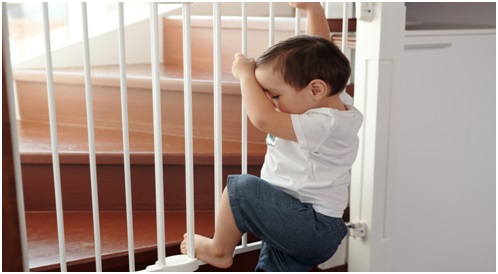A home is where individuals reside and feel comfortable and safe. However, it can also be a location where safety hazards can lead to accidents and injuries. Safety hazards are potential dangers that can cause harm or injury to individuals. These hazards may not be immediately apparent and are found in various areas of the home.
Home safety hazards can include anything from slippery floors, uneven surfaces, cluttered areas, faulty wiring, gas leaks, and outdated appliances. It is important to be aware of these hazards and take the necessary steps to prevent accidents and injuries.
According to the National Safety Council, thousands of people in the United States die from unexpected injuries in the home each year. In order to ensure a safe living environment, it is essential to identify and prevent safety hazards in the home.
IMPORTANCE OF IDENTIFYING AND PREVENTING SAFETY HAZARDS
Identifying and preventing safety hazards is critical to maintaining a safe and healthy home environment. Safety hazards can cause serious injury or even death, and taking preventive measures can save lives. Individuals can create a positive and secure living environment for themselves and their families by identifying and mitigating potential hazards.
COMMON SAFETY HAZARDS AT HOME
- Asbestos
Asbestos is a hazardous mineral that was widely used in construction and industrial products until its negative health effects were discovered. It can still be found in many older homes, and identifying and preventing potential sources of asbestos is crucial to avoiding exposure to its harmful fibers. Asbestos exposure can have serious negative effects on a person’s health. Asbestos fibers, when inhaled, can cause serious lung diseases like malignant mesothelioma and asbestosis. These diseases can be fatal and are typically not diagnosed until several years after asbestos exposure. Getting your home tested for asbestos is important if it was built before 1990.
- Slips, trips, and falls
Slips, trips, and falls are among the most common safety hazards in homes. They can be caused by things like loose rugs or carpets, cluttered floors, poor lighting, and unsecured ladders. Falls can result in serious injury, particularly for older adults and young children.
- Fire hazards
Fires and burns can be caused by cooking accidents, electrical malfunctions, heating equipment, and smoking materials. It is essential to have working smoke alarms and fire extinguishers in the home and to follow fire safety guidelines.
- Poisoning
Poison is a significant safety hazard in the home, particularly for children and pets who may accidentally ingest hazardous substances. Common sources of poison in the home include cleaning products, pesticides, medications, and certain houseplants.
- Electrical hazards
Electrical hazards can be caused by overloaded outlets, frayed wires, and faulty electrical appliances. It is important to have electrical systems and appliances regularly checked and maintained.
- Suffocation and strangulation
Suffocation and strangulation can occur from items like plastic bags, cords, and window coverings. It is important to keep these items away from young children and to secure window coverings.
- Carbon monoxide
Carbon monoxide (CO) is a colorless, odorless gas that is highly toxic to humans and animals. It is a byproduct of incomplete combustion and can be produced by gas stoves, furnaces, water heaters, fireplaces, and other fuel-burning appliances. Carbon monoxide is a significant safety hazard in the home, and exposure to it can cause serious health problems and even death.
IDENTIFYING SAFETY HAZARDS AT HOME:
- Methods for identifying safety hazards:
One of the most effective ways to identify safety hazards at home is to conduct a home safety audit. This involves walking through the home and looking for potential hazards. It can also be helpful to ask for the input of family members or friends who may be able to identify hazards that you may have overlooked. Home safety checklists and guides are available online and can be helpful resources.
- Common areas of the home where safety hazards are present:
Safety hazards can be found all around your home, but some areas are more prone to hazards than others. For example, the kitchen is a common area for burns and fires, and the bathroom is a common area for slips, trips, and falls. Stairs and hallways are also high-risk areas for falls, and electrical hazards are commonly found in areas with a high concentration of electrical appliances or outlets, such as the kitchen, living room, and home office.
PREVENTING SAFETY HAZARDS AT HOME
Preventing safety hazards in the home is essential for maintaining a safe and healthy living environment. Here are some methods for preventing safety hazards in your home:
- Regular home maintenance: Conduct regular maintenance checks on your home’s systems and appliances to ensure they are functioning correctly and not posing a safety hazard. This includes checking for water leaks, inspecting electrical wiring, and ensuring that smoke and carbon monoxide detectors are in working order.
- Keep your home clean: A clean home can help prevent accidents and hazards. Clean up spills promptly, keep floors free of clutter, and store objects in their proper places.
- Use proper equipment and tools: Use proper equipment and tools when performing home repairs or maintenance. This includes using appropriate personal protective equipment (PPE), such as gloves or goggles, and ensuring that power tools are in good working order.
- Keep emergency supplies on hand: Keep emergency supplies, such as a first aid kit, fire extinguisher, and flashlight, readily accessible in case of an emergency.
- Teach children about safety: Teach children about safety in the home, including the dangers of electrical outlets and household chemicals. Keep potentially dangerous items out of reach of children and pets.
- Install safety features: Install safety features in your home, such as handrails on staircases and non-slip mats in the bathroom.
- Use caution when cooking: Always stay in the kitchen while cooking and keep flammable objects away from the stove.
- Practice water safety: If you have a pool or hot tub, install a fence or barrier to keep young children and pets away from the water.
Taking these precautions can help prevent safety hazards in your home and keep yourself and your family safe.
SUMMING IT UP
Safety hazards in the home can have serious consequences, but they can be prevented by identifying potential hazards and taking appropriate preventive measures. By conducting a home safety audit, individuals can identify potential hazards and take steps to prevent accidents and injuries. It is important to take action to reduce the risk of accidents in the home and create a safe and healthy living environment for all occupants. By taking preventive measures, individuals can ensure their homes remain safe and secure places for themselves and their families.



